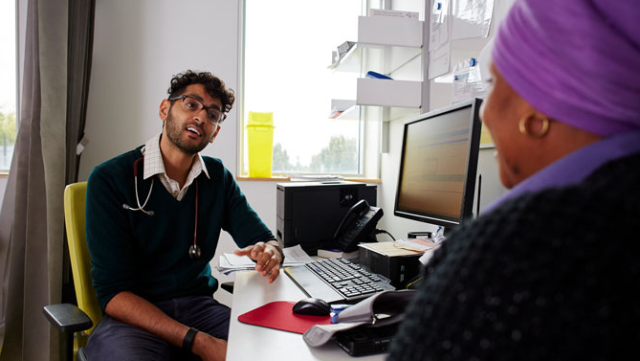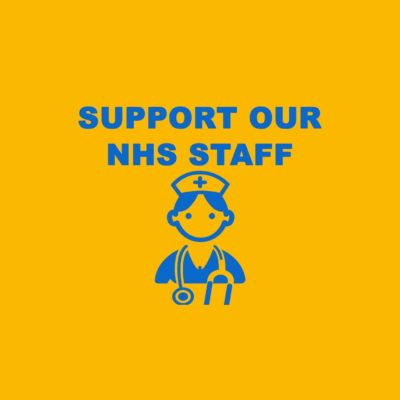
The headlines continue to tell the story of the precipitous decline in General Practice – increasing rates of practice closures, falling GP numbers and lengthening waits for appointments. And behind the figures is something less tangible but as important – the destruction of the general practice model based on personal continuing community-based care from a GP that you know and who knows you. This is not just some soft “touch feely” thing but a hard evidence-based foundation for providing safe, high quality, clinically and cost-effective primary care.
There is evidence not only that continuity of care improves quality but that it actually saves lives! Not only is continuity much loved by patients, who recognise its value, but it is one of the main sources of job satisfaction for GPs. All that is now slipping away and the powers that be – the Government, NHS England, NHS Improvement – don’t give a damn.
Half a million people lost their GP practice in 2018. Practices are closing at an accelerating rate. Some are not closing but merging but this too has an adverse impact on patients as many are finding they have much further to travel for care. The crisis in General Practice in England is unsustainable. When hospital and community services are struggling to cope with the extra demands placed upon them amidst cuts and rising need, General Practice staff are bearing the brunt of a system at breaking point.
Why are GPs under so much pressure?
The reasons for this crisis are complex and include longstanding neglect of general practice. Research by the BMA has found that the proportion of the NHS budget going to general practice in England has fallen under successive governments from 9.6% in 2005/06 to 7.4% in 2013/14 rising slightly to 8.1% in 2017/18.
This crisis has been a long time in the making with failures of successive government to recognise and fund the increasing range of work that General Practice was being expected to do. Over the past few decades there has been a significant shift of work from hospitals to general practice with no matching increase in resources. For example, GPs and practice nurses are now responsible for managing most long-term conditions such as diabetes, cardiovascular and chest disease, which mainly used to be managed by hospital doctors.
Long-term conditions account for 55% of GP appointments. A skyrocketing surgical waiting list of over 4 million means more patients also need to access medical support whilst waiting for treatment. GPs also have an increasing role in treating people with mental health problems, and in prevention, public health and health promotion, not to mention safeguarding children and vulnerable adults.
Yet, despite the increased complexity that such work generates, GPs are still expected to fit everything into 10-minute appointments and deal with up to 60 patients a day!
At breaking point
The crisis has reached critical status under the impact of austerity and cuts to all public services since 2010, and notably social care. An ageing population is often blamed, but, whilst deserving of significant input, their needs are entirely predictable and certainly not the cause. Like all NHS services, general practice has been underfunded and understaffed, cut and neglected and in addition primary care services are picking up the pieces for the collapse of social care and savage cuts to public and mental health budgets.
Many clinicians working in primary care are at significant risk of mental ill health and burnout and retire early or reduce their hours, as they struggle to cope with the increased workload and innumerable added demands. GPs have warned that they are so overwhelmed with patients they are making avoidable mistakes.
Job satisfaction is declining – stress and risks are increasing. Many young doctors, on completing their GP training, are choosing not to go into permanent general practice jobs, opting to spend their time as a kind of medical traveller, doing locums and other transient work. That this is considered preferable to providing holistic care and continuity to people in a community over time speaks volumes for the state of general practice – it can no longer offer the very thing that made it different, special and desirable among other possible medical careers. Too many leave general practice early and two thirds of doctors take early retirement; double the rate seen 5 years ago.
Broken promises
The government has spectacularly failed in its 2015 promise to recruit an extra 5,000 GPs by 2020. Recent research by the Nuffield Trust shows that general practice has experienced its first sustained fall in GPs per population in 50 years. The number of GPs per 100,000 people in the UK has fallen from nearly 65 in 2014 to 60 last year, with a direct negative impact on both patients and staff.
Parts of Europe expect the ratio to be 100 GPs per 100,000 patients (1 per 1000). In Italy, they have to employ an additional doctor if the patient numbers rise to above 1000. In Catalonia, doctors went on strike to demand safer numbers. Here the ratio is closer to one per 2000 and England, with 58.1 GPs pre 100,000, is the worst in the UK. The impact on both patient access and on stress for GPs is dangerous.
The number of trainee GPs in England has risen - last year nearly 3,500 trainee posts were taken in England, up by 800 since 2014. Yet one in three do not go on to a career in general practice in the NHS, put off by the conditions of work, according to the Nuffield Trust.
An analysis from Imperial College suggests that NHS England has substantially underestimated the current shortage of general practitioners and the numbers required to plug the gap. It estimates that in 2016, the NHS in England was already around 6500 general practitioners below the ideal number, the shortfall rising to 12,100 by 2020.
And what of the future?
Health secretary and tech-junkie Matt Hancock appears to envisage a time when there is no longer any need for surgeries or to see a GP in person – patients will be able to book and consult with their doctor virtually, minimising patient access to face-to-face consultation in the surgery or on the phone. GPs would have minimal overheads and primary care would be replaced by digital apps. Continuity of care for the patient with their GP would be lost forever.
Considering the dramatic decline in GP numbers and the lack of any credible solution posed by this government, this potential vision has to be feared and fought against.
A few years ago, in response to the growing outcry about the dire state of General Practice, the Government finally claimed to be doing something to support General Practice. It launched the GP Five Year Forward View which promised significant extra funding for General Practice by 2020, targeted at those in most need. This never materialised. Most of the money was channelled to bribing practices to merge together into big “GP at Scale” conglomerates, while smaller practices got hardly anything. Now the Government is proposing another “solution” to the problems of general practice: Primary Care Networks. But PCNs will not solve the problems of general practice. (for further information on PCNs see this article)
It is adequate funding that is key to general practices attracting enough staff to enable longer appointments and more manageable workloads. If working conditions improve the number of doctors choosing to be GPs will increase, access will improve, waiting times for appointments will reduce, and continuity of care will increase. This essential job will then be attractive to more doctors and there will be a virtuous cycle.
General practice was once a very popular career and it can happen again. The crisis can be reversed if there is the political will. And that requires patients and members of the public to join doctors and NHS staff in campaigning loudly and clearly for the necessary changes.
Now is the time to campaign for what is a core component part of the National Health Service – the right of every person in the country to be registered with their GP practice and to seek advice and treatment, without delay, without fear and without payment. Read our draft charter and join us in developing a campaign to preserve and strengthen general practice at the heart of our NHS.
Dr Louise Irvine is a London GP, Keep Our NHS Public campaigner and Secretary of Health Campaigns Together
Samantha Wathen is press and media officer for Keep Our NHS Public







Leave a Reply